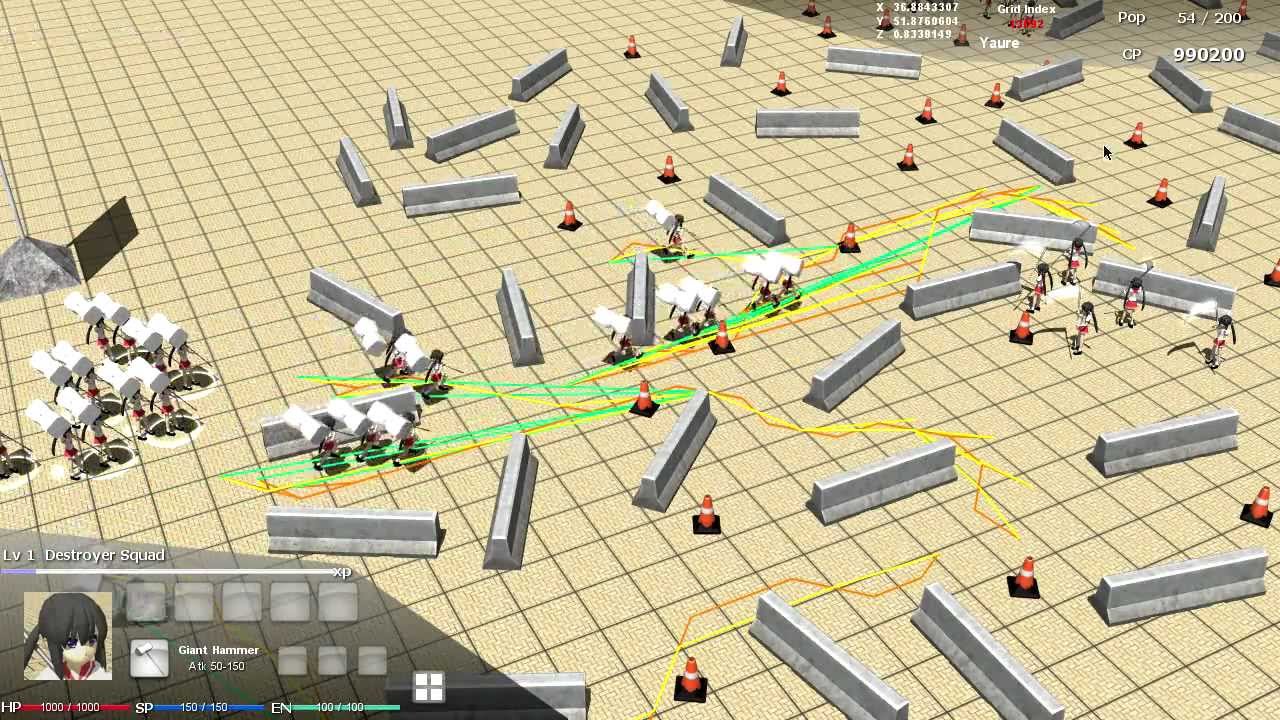Game development services are constantly seeking innovative ways to create more realistic and engaging gaming experiences. Artificial intelligence (AI) and pathfinding algorithms are two crucial technologies that work together to bring game worlds to life. AI controls character behavior, while pathfinding enables those characters to navigate complex environments intelligently. Did you know that efficient pathfinding algorithms are essential for creating believable and responsive AI characters, significantly impacting player immersion and enjoyment? This blog post explores the role of AI and pathfinding in games, delving into the various techniques and their impact on game development. Read our blog on complete guide on how to make a car game.
What is Pathfinding?
Finding the best route: Pathfinding is the process of determining the shortest or most efficient route between two points in a game world.
Essential for AI: AI-controlled characters rely on pathfinding to navigate environments, pursue players, and perform other actions that require movement.
Common Pathfinding Algorithms
A Search Algorithm:
- Widely used: A* is a popular and versatile pathfinding algorithm that finds the optimal path by considering both distance and heuristics (estimated cost to the goal).
- Efficiency: It’s known for its efficiency and ability to handle complex environments.
Dijkstra’s Algorithm:
- Finding the shortest path: Dijkstra’s algorithm finds the shortest path from a starting node to all other nodes in a graph.
- Guaranteed optimality: It guarantees finding the shortest path but can be less efficient than A* for large maps.
Breadth-First Search (BFS):
- Exploring the map: BFS explores the map layer by layer, starting from the starting node.
- Simple implementation: It’s relatively simple to implement but can be inefficient for large maps.
Depth-First Search (DFS):
- Exploring along a path: DFS explores the map by going as deep as possible along a single path before backtracking.
- Less efficient: It’s generally less efficient than BFS or A* for pathfinding.
AI and Pathfinding: Working Together
AI decision-making: AI controls the overall behavior of characters, deciding what actions they should take (e.g., attack, defend, flee).
Pathfinding execution: Once the AI decides on a movement action, it uses a pathfinding algorithm to determine the best route to the target location.
Seamless integration: AI and pathfinding work together seamlessly to create believable and responsive character behavior.
Implementing Pathfinding in Games
Navigation Meshes (Navmeshes):
- Simplified representation: Navmeshes are simplified representations of the game world that make pathfinding more efficient.
- Defining walkable areas: They define the areas where AI characters can move.
Waypoints:
- Predefined paths: Waypoints are predefined points in the game world that AI characters can follow.
- Simpler but less flexible: This approach is simpler to implement but less flexible than navmeshes.
Real-time vs. Pre-calculated Paths:
- Real-time: Paths are calculated dynamically as needed.
- Pre-calculated: Paths are calculated in advance and stored for later use.
Challenges and Considerations
Performance: Pathfinding can be computationally intensive, especially for large maps and many AI characters.
Dynamic Environments: Handling moving obstacles and changes in the environment can be challenging.
Realistic Movement: Creating natural and believable character movements requires more than just finding the shortest path.
Advanced Techniques
Hierarchical Pathfinding: Breaking down large maps into smaller regions to improve pathfinding performance.
Dynamic Pathfinding: Adapting paths in real-time to account for changes in the environment.
Crowd Simulation: Simulating the movement of large crowds of AI characters.
The Role of Game Development Services
Game development services can provide expertise in implementing and optimizing AI and pathfinding systems for games. They can help with:
- Choosing the right pathfinding algorithm
- Creating efficient navmeshes
- Optimizing performance
- Integrating AI and pathfinding seamlessly
The Future of AI and Pathfinding
AI and pathfinding are constantly evolving, with new algorithms and techniques being developed to create even more realistic and engaging game worlds.
Conclusion
AI and pathfinding are essential components of modern game development, especially for creating believable and engaging AI characters. By understanding the various pathfinding algorithms, their strengths and weaknesses, and how they integrate with AI, developers can create truly immersive and dynamic gaming experiences. As game development services continue to innovate in this area, we can expect even more realistic and intelligent AI characters populating our virtual worlds. The future of gaming is deeply intertwined with the continued advancements in AI and pathfinding technologies, promising to deliver even more immersive and believable virtual experiences.

